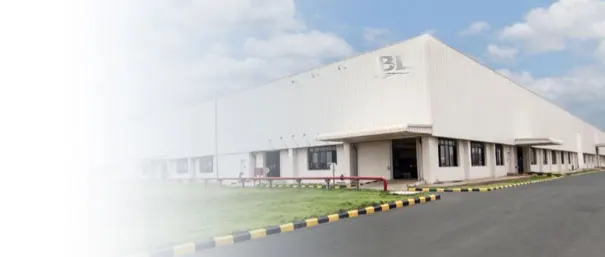ASTM 316Ti Stainless Steel: Titanium-Stabilized Austenitic Grade for Enhanced Corrosion Resistance in Harsh Environments
ASTM 316Ti (UNS S31635) is a titanium-stabilized variant of the 316 stainless steel family, engineered to overcome intergranular corrosion in welded structures while maintaining superior resistance to pitting and crevice corrosion in chloride-rich environments. By adding titanium (5×C min), this grade prevents chromium carbide precipitation during welding or high-temperature exposure, making it ideal for chemical processing, marine applications, and pharmaceutical equipment where standard 316/316L may suffer from sensitization. This article explores its metallurgical properties, performance advantages, processing requirements, and industry-specific applications.
1. Chemical Composition (ASTM A240/A480 Standard)
| Element | Content Range | Function |
|---|---|---|
| Carbon (C) | ≤ 0.08% | Balanced for strength; titanium stabilization mitigates carbide formation |
| Chromium (Cr) | 16.00 – 18.00% | Forms passive Cr₂O₃ film; primary corrosion resistance mechanism |
| Nickel (Ni) | 10.00 – 14.00% | Stabilizes austenitic structure; enhances ductility and low-temperature toughness |
| Molybdenum (Mo) | 2.00 – 3.00% | Improves pitting resistance equivalent (PREN ≥ 25); critical for chloride environments |
| Titanium (Ti) | ≥ 5×C% | Carbide stabilizer; binds carbon to prevent chromium depletion at grain boundaries |
| Manganese (Mn) | ≤ 2.00% | Enhances hot workability; partial nickel substitute for cost optimization |
| Silicon (Si) | ≤ 1.00% | Improves oxidation resistance; aids in deoxidation during smelting |
| Phosphorus (P) | ≤ 0.045% | Controlled impurity; excessive levels reduce toughness and corrosion resistance |
| Sulfur (S) | ≤ 0.030% | Minimized to prevent hot cracking and reduce inclusion formation |
2. Mechanical Properties (Room Temperature)
- Tensile Strength (σb): ≥ 515 MPa (ASTM A240 minimum; typically 580-750 MPa in annealed condition)
- Yield Strength (σ0.2): ≥ 205 MPa (higher than 304 due to molybdenum and titanium additions)
- Elongation (δ): ≥ 40% (excellent formability for deep drawing and cold forming)
- Hardness (HB): ≤ 217 (Brinell); ≤ 95 HRB (Rockwell) in solution-annealed state
- Impact Toughness (CVN): ≥ 100 J at -196°C (superior cryogenic performance for LNG applications)
- Pitting Resistance Equivalent (PREN): ≥ 25 (calculated as %Cr + 3.3×%Mo + 16×%N)
3. Metallurgical Processing & Heat Treatment
- Smelting: Electric arc furnace (EAF) + argon oxygen decarburization (AOD) with titanium addition during secondary refining to ensure Ti/C ratio ≥ 5:1, preventing sensitization.
- Hot Rolling: Conducted at 1150-1260°C with rapid water quenching to retain austenitic structure and prevent sigma phase formation.
- Cold Rolling: Multi-stage cold reduction (up to 60%) with intermediate annealing at 1050-1120°C to achieve precise thickness tolerances and surface finishes (2B, No.4, or BA).
- Solution Annealing: Heated to 1020-1120°C followed by water quenching to dissolve titanium carbides and restore corrosion resistance.
- Stabilization Treatment: Optional 850-900°C soak for welded structures to maximize intergranular corrosion resistance in service.
- Surface Finishing: Pickling in nitric-hydrofluoric acid blend (10-20% HNO₃ + 2-5% HF) followed by passivation in 20-30% HNO₃ at 50-70°C for 30-60 minutes.
4. Corrosion Resistance Performance
| Corrosion Type | Performance | Comparative Advantage |
|---|---|---|
| Intergranular Corrosion | Excellent (ASTM A262 Practice E) | Titanium stabilization prevents chromium carbide precipitation during welding |
| Pitting Corrosion | PREN ≥ 25 (ASTM G48) | Superior to 304/304L; comparable to 316L but with better welded joint performance |
| Crevice Corrosion | Critical crevice temperature: ≥ 15°C (ASTM G48) | Molybdenum content enhances resistance in stagnant chloride solutions |
| Stress Corrosion Cracking | Resistant in chloride environments ≤ 100°C | Higher nickel content than 304 improves SCC resistance in mild chloride exposure |
| General Corrosion | ≤ 0.1 mm/year in 5% H₂SO₄ at 50°C | Outperforms 304 in acidic environments due to molybdenum addition |
5. Primary Application Industries
Chemical & Petrochemical Processing
Reactors, heat exchangers, and piping systems for acetic acid, sulfuric acid (≤ 10%), and chloride-containing organic compounds. Compliant with NACE MR0175 for sour service applications.
Marine & Offshore Engineering
Shipbuilding components, seawater desalination plants, and offshore platform structures where resistance to saltwater spray and biofouling is critical.
Pharmaceutical & Biotechnology
Fermenters, sterilization equipment, and cleanroom piping (ASME BPE compliant) where crevice corrosion resistance and smooth surfaces (Ra ≤ 0.5 μm) are required.
Pulp & Paper Industry
Bleaching equipment, digesters, and white liquor tanks resistant to sulfur compounds and chlorides at elevated temperatures (up to 150°C).
Food & Beverage Processing
High-salinity food production (soy sauce, brine solutions) and brewery equipment where 316L may suffer from weld decay.
Power Generation
FGD systems, flue gas scrubbers, and nuclear fuel reprocessing components exposed to corrosive condensates.
6. Comparison with Related Grades
| Grade | Key Alloying | Corrosion Resistance | Optimal Use Case |
|---|---|---|---|
| ASTM 316 | 16-18% Cr, 10-14% Ni, 2-3% Mo | Good; susceptible to weld sensitization | Non-welded components in moderate chloride environments |
| ASTM 316L | ≤ 0.03% C, 16-18% Cr, 10-14% Ni, 2-3% Mo | Better than 316; low-carbon prevents sensitization | Welded structures where post-weld annealing isn’t feasible |
| ASTM 316Ti | Ti ≥ 5×C, 16-18% Cr, 10-14% Ni, 2-3% Mo | Superior; titanium stabilization enables high-temperature welding | Heavy-section welded components (≥ 6mm) in corrosive environments |
| ASTM 317L | ≤ 0.03% C, 18-20% Cr, 11-15% Ni, 3-4% Mo | Best; higher Mo content (PREN ≥ 30) | Severe chloride environments (e.g., seawater cooling systems) |
7. Fabrication & Welding Guidelines
- Machining: Use carbide tools (grade K10-K20) with slow speeds (60-90 m/min) and heavy feeds to avoid work hardening. Coolants with sulfur/chlorine additives should be avoided.
- Forming: Cold forming requires 20-30% greater force than carbon steel; intermediate annealing recommended for complex shapes to restore ductility.
- Welding: Preferred methods: TIG (GTAW) or MIG (GMAW) with ER316LTi filler metal. Preheat not required; post-weld annealing at 1050-1100°C for full corrosion resistance restoration.
- Heat Treatment: Avoid prolonged exposure to 450-850°C (sensitization range). Stress relief at 300-400°C is safe if required.
- Cleaning: Post-fabrication passivation with 20-30% nitric acid at 50-70°C for 30-60 minutes to remove free iron and restore passive film.
8. Request a Customized Stainless Steel Quote
For ASTM 316Ti stainless steel products—including sheets, plates, coils, pipes, and custom fabricated components—contact our technical team with your specifications. We provide mill-certified materials (EN 10204 3.1/3.2), precision cutting, and value-added services like polishing and passivation to meet your project requirements.
.content-wrap { font-family: Arial, Helvetica, sans-serif; color: #333; line-height: 1.8; max-width: 1200px; margin: 0 auto; padding: 20px 30px; }
.article-title { font-size: 28px; color: #222; font-weight: 700; margin: 0 0 30px; padding-bottom: 15px; border-bottom: 2px solid #eee; position: relative; }
.article-title::after { content: “”; position: absolute; left: 0; bottom: -2px; width: 120px; height: 2px; background-color: #2c5282; }
.article-intro { font-size: 16px; color: #444; margin: 0 0 40px; text-align: justify; }
.section-title { font-size: 22px; color: #2c5282; font-weight: 600; margin: 50px 0 25px; padding-left: 15px; border-left: 4px solid #2c5282; }
.table-container { width: 100%; overflow-x: auto; margin: 0 0 30px; }
.spec-table, .compare-table { width: 100%; border-collapse: collapse; background-color: #fff; box-shadow: 0 2px 5px rgba(0,0,0,0.05); }
.spec-table th, .spec-table td, .compare-table th, .compare-table td { padding: 12px 15px; border: 1px solid #eee; text-align: left; }
.spec-table th, .compare-table th { background-color: #f8f9fa; color: #2c5282; font-weight: 600; }
.spec-table tr:hover, .compare-table tr:hover { background-color: #fafafa; }
.property-list, .process-list, .precaution-list { padding-left: 20px; margin: 0 0 35px; }
.property-list li, .precaution-list li { margin: 0 0 12px; font-size: 15px; }
.process-list li { margin: 0 0 18px; font-size: 15px; }
.property-list strong, .process-list strong, .precaution-list strong { color: #2c5282; }
.application-grid { display: grid; grid-template-columns: repeat(auto-fit, minmax(280px, 1fr)); gap: 25px; margin: 0 0 40px; }
.application-item { padding: 20px; background-color: #fafafa; border-radius: 6px; border: 1px solid #eee; }
.application-item h3 { font-size: 18px; color: #2c5282; margin: 0 0 12px; font-weight: 600; }
.application-item p { font-size: 14px; color: #555; margin: 0; }
.quote-cta-section { margin: 60px 0 20px; padding: 30px; background-color: #f8fafc; border-radius: 8px; border: 1px solid #e2e8f0; }
.quote-cta-content { max-width: 800px; margin: 0 auto; text-align: center; }
.quote-cta-content p { font-size: 16px; color: #475569; margin: 0 0 30px; line-height: 1.8; }
.quote-cta-btn { display: inline-block; padding: 12px 35px; background-color: #2c5282; color: #fff; font-size: 16px; font-weight: 600; text-decoration: none; border-radius: 4px; transition: background-color 0.3s ease; }
.quote-cta-btn:hover { background-color: #1e3a8a; }


